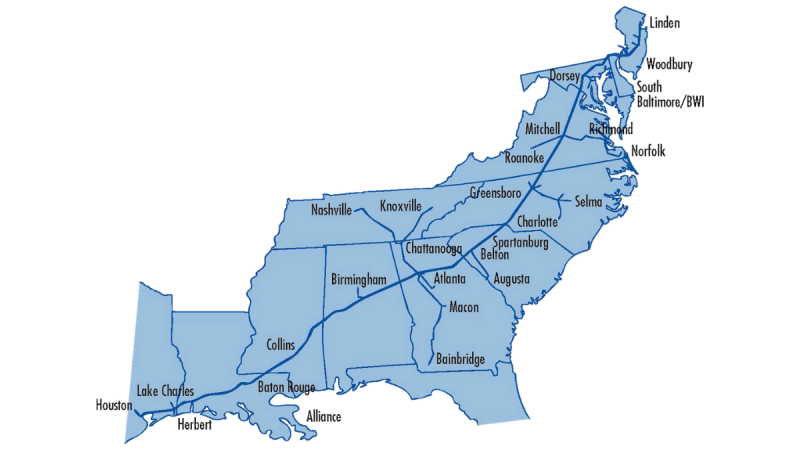Hack Exposes Vulnerability Of America’s Energy Supply Lines
Colonial Pipeline’s shutdown of its 5,500-mile pipeline Friday after a ransomware attack brought attention to the vulnerability of the energy infrastructure on which the country relies. The New York Times reported Sunday that it was unclear when the pipeline, which carries nearly half of the East Coast’s fuel supplies, would reopen.
This is not the first time the public’s attention has been turned to the things that can go wrong with the energy supply. In 2016, BirminghamWatch’s Hank Black wrote about the pipelines that run through the state and the Southeast. Here’s an excerpt:
By Hank Black, September 23, 2016
The Colonial Pipeline gasoline spill in Shelby County was a wake-up call for the public and the government about just how critical oil and gas pipelines are to America’s energy supply needs, and how such an incident could impact the environment.
The Cahaba River Society said the spill “very narrowly missed” entering the river, less than a mile away. CRS field director Randy Haddock, PhD, said pipeline safety isn’t top-of-mind until a significant incident occurs. “As the acute phase of this event ends, we expect to start having conversations” among advocacy groups, industry, government, and others about how to prevent or limit damage when another incident occurs, Haddock said. Some experts say the 50-year average age of the nation’s pipelines is cause for concern.
Alabama has 6,748 miles of interstate pipeline, plus more than 57,000 miles of smaller main and service lines that distribute product from a transmission pipeline. By comparison, Mississippi has 10,450 miles of interstate pipe, and Arkansas has 7,212 miles. Read the full story here.
Brigitte Bardot, sex goddess of cinema, has died
Legendary screen siren and animal rights activist Brigitte Bardot has died at age 91. The alluring former model starred in numerous movies, often playing the highly sexualized love interest.
For Ukrainians, a nuclear missile museum is a bitter reminder of what the country gave up
The Museum of Strategic Missile Forces tells the story of how Ukraine dismantled its nuclear weapons arsenal after independence in 1991. Today many Ukrainians believe that decision to give up nukes was a mistake.
Jeffrey R. Holland, next in line to lead Church of Jesus Christ of Latter-day Saints, dies at 85
Jeffrey R. Holland led the Quorum of the Twelve Apostles, a key governing body. He was next in line to become the church's president.
Winter storm brings heavy snow and ice to busy holiday travel weekend
A powerful winter storm is impacting parts of the U.S. with major snowfall, ice, and below zero wind chills. The conditions are disrupting holiday travel and could last through next week.
Disability rights advocate Bob Kafka dead at 79
Bob Kafka was an organizer with ADAPT (American Disabled for Attendant Programs Today), a group which advocates for policy change to support people with disabilities.
‘It’s behind you!’ How Britain goes wild for pantomimes during the holidays
Pantomimes are plays based on a well-known story — often a fairy tale — which are given a bawdy twist. The audience is expected to join in throughout, shouting as loudly as they can.









